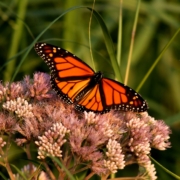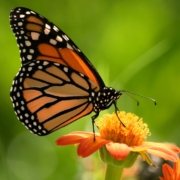Fruit Fly : The Genetics Genius
The Tiny Genius That Changed Science: Drosophila melanogaster
Meet the insect that changed science forever. It has tiny wings and lives a short life, but its contribution to science is massive. It’s not just any fly — it’s the unsung hero of genetics:
👉 Drosophila melanogaster, also known as the common fruit fly.
You may have seen this little fly buzzing around bananas or other ripe fruits in your kitchen. But did you know that this tiny creature helped scientists discover how genes are passed from parents to children? This is the incredible story of how one small fly became a giant in the world of science.
🧩 A Riddle to Begin…
Let’s start with a riddle:
“Tiny wings, a simple fly,
Yet I helped science touch the sky.
With mutants, traits, and gene displays,
In my short life, I led the way.
What insect launched genetic fame?”
Answer: Drosophila melanogaster — The fly that taught humans about heredity!
🧪 Why Fruit Flies?
You might wonder: why study flies when we’re trying to understand human biology?
Well, it turns out that fruit flies are a perfect model organism for several reasons:
- 🕒 Short Life Cycle: A fruit fly grows from an egg to an adult in about 10 days. This means scientists can observe many generations quickly.
- 🧬 Simple Genome: Fruit flies have only 4 pairs of chromosomes, making it easier to study their DNA.
- 👩🔬 Easy to Keep in the Lab: They are small, don’t take up much space, and reproduce quickly — a dream for scientists!
- 🧠 Surprisingly Similar to Humans: Even though they’re tiny, fruit flies share about 60% of their genes with humans. Many of the genes that control development and disease in flies are similar to those in us.
🔍 The Beginning of Genetic Discovery
The real fame of Drosophila started in the early 1900s with a scientist named Thomas Hunt Morgan. He and his team at Columbia University began experimenting with fruit flies to understand how traits are passed from one generation to the next.
Here’s what they discovered:
- 🍎 Mutations Matter: By studying flies with white eyes (instead of the usual red), Morgan proved that genes are carried on chromosomes.
- ♀️♂️ Sex-Linked Traits: He also showed that some traits are linked to sex chromosomes, which helped explain why some genetic diseases affect boys more than girls.
- 🗺️ Gene Mapping: Morgan’s team created the first genetic maps, showing where genes are located on a chromosome.
For his groundbreaking work, Thomas Hunt Morgan won the Nobel Prize in 1933. His research with Drosophila laid the foundation of modern genetics.
🔬 A Tiny Teacher in Modern Science
Even after more than 100 years, fruit flies are still teaching us new things!
Here’s what they’re helping us study today:
- 🧠 Brain and Behavior: Scientists study how fruit fly brains control learning, memory, and sleep.
- 🧫 Disease Research: Fruit flies are used to model diseases like cancer, Parkinson’s, and Alzheimer’s — helping to test treatments.
- 🧬 Development: From a single cell to a full adult, fruit flies help us understand how living things grow and develop.
All of this is possible because we can control and observe mutations easily in fruit flies. Their transparent embryos, fast life cycle, and detailed genetic tools make them ideal for deep scientific exploration.
👑 The Legacy of a Little Fly
From the kitchen counter to the Nobel stage, the journey of Drosophila melanogaster is nothing short of amazing. It has shown the world that even the smallest creatures can reveal life’s biggest secrets.
This tiny fly continues to help us answer questions like:
- How do genes control growth?
- Why do genetic diseases happen?
- Can we fix or treat genetic disorders?
And many more…
🚀 Want to Explore More?
If you loved learning about this tiny genius, there’s so much more to explore in the world of genetics! From bacteria and worms to mice and zebrafish, science uses many amazing creatures to unlock the secrets of life.
🎥 Subscribe to our channel for more fun and fascinating science facts.
🔁 Share this blog with fellow science lovers, and
💬 Tell us in the comments — what other model organisms would you like to learn about next?
💡 Fun Fact:
A single female fruit fly can lay over 500 eggs in her lifetime. No wonder labs always have plenty of flies to study!








Leave a Reply
Want to join the discussion?Feel free to comment!